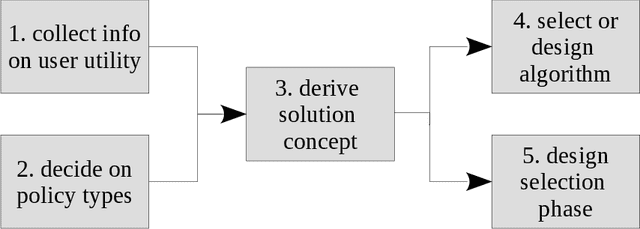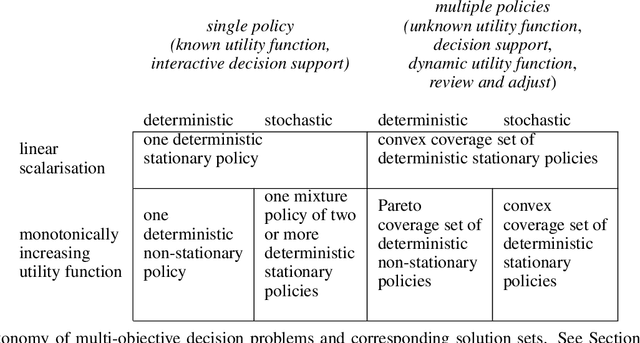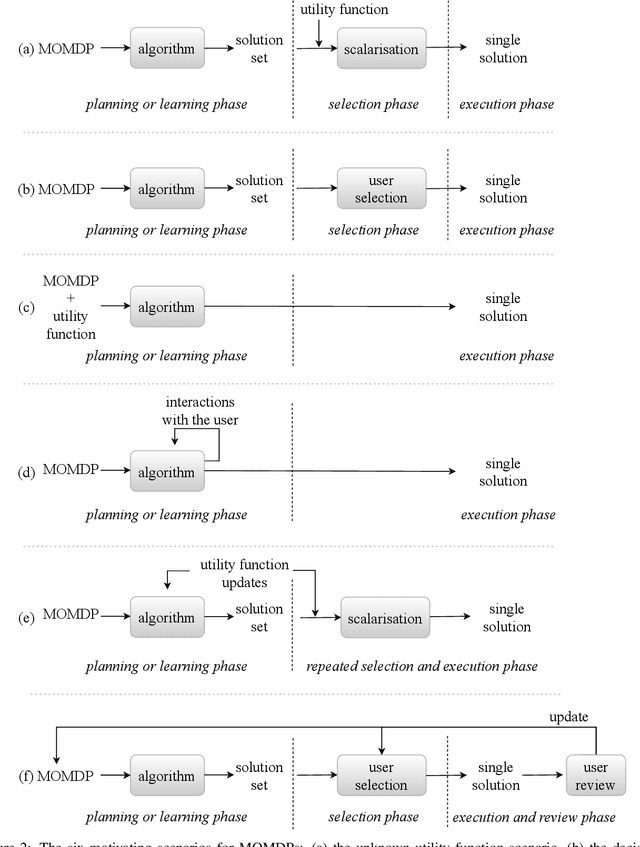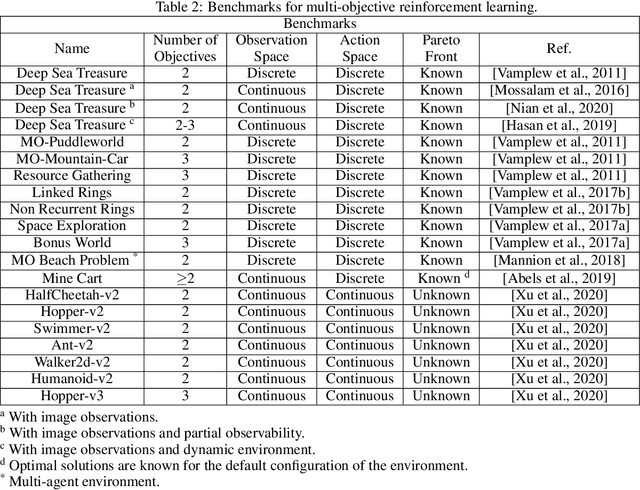Gabriel Ramos
Utility-Based Reinforcement Learning: Unifying Single-objective and Multi-objective Reinforcement Learning
Feb 05, 2024Abstract:Research in multi-objective reinforcement learning (MORL) has introduced the utility-based paradigm, which makes use of both environmental rewards and a function that defines the utility derived by the user from those rewards. In this paper we extend this paradigm to the context of single-objective reinforcement learning (RL), and outline multiple potential benefits including the ability to perform multi-policy learning across tasks relating to uncertain objectives, risk-aware RL, discounting, and safe RL. We also examine the algorithmic implications of adopting a utility-based approach.
A Practical Guide to Multi-Objective Reinforcement Learning and Planning
Mar 17, 2021



Abstract:Real-world decision-making tasks are generally complex, requiring trade-offs between multiple, often conflicting, objectives. Despite this, the majority of research in reinforcement learning and decision-theoretic planning either assumes only a single objective, or that multiple objectives can be adequately handled via a simple linear combination. Such approaches may oversimplify the underlying problem and hence produce suboptimal results. This paper serves as a guide to the application of multi-objective methods to difficult problems, and is aimed at researchers who are already familiar with single-objective reinforcement learning and planning methods who wish to adopt a multi-objective perspective on their research, as well as practitioners who encounter multi-objective decision problems in practice. It identifies the factors that may influence the nature of the desired solution, and illustrates by example how these influence the design of multi-objective decision-making systems for complex problems.
Binary Segmentation of Seismic Facies Using Encoder-Decoder Neural Networks
Nov 15, 2020
Abstract:The interpretation of seismic data is vital for characterizing sediments' shape in areas of geological study. In seismic interpretation, deep learning becomes useful for reducing the dependence on handcrafted facies segmentation geometry and the time required to study geological areas. This work presents a Deep Neural Network for Facies Segmentation (DNFS) to obtain state-of-the-art results for seismic facies segmentation. DNFS is trained using a combination of cross-entropy and Jaccard loss functions. Our results show that DNFS obtains highly detailed predictions for seismic facies segmentation using fewer parameters than StNet and U-Net.
 Add to Chrome
Add to Chrome Add to Firefox
Add to Firefox Add to Edge
Add to Edge